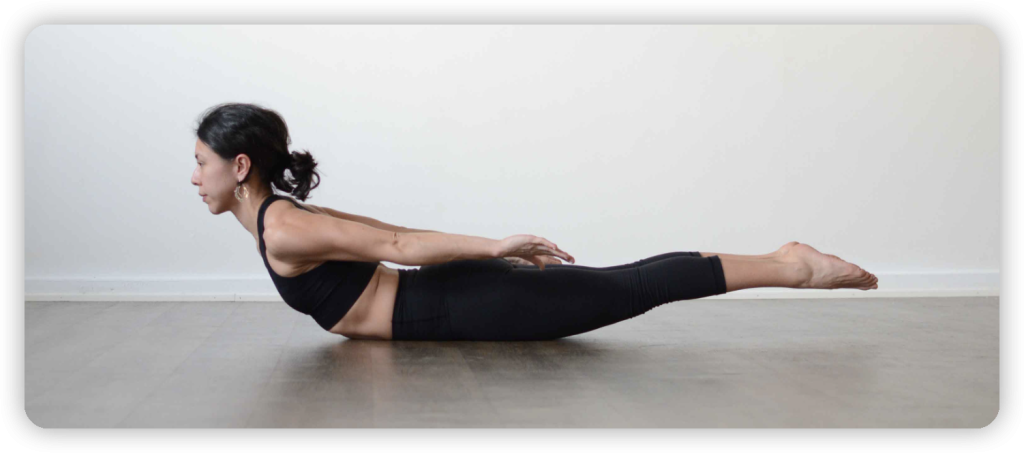The Locust Pose, known in yoga as Salabhasana, is a rejuvenating backbend that helps strengthen the back body while providing a gentle stretch to the front body. Let’s break down the pose for clarity:

Benefits:
- Strengthens the Spine: This pose engages and strengthens the muscles surrounding the spine, making it beneficial for overall spinal health.
- Tones the Back Body: Locust pose activates the muscles of the upper and lower back, glutes, hamstrings, and triceps.
- Stretches the Front Body: As you lift, there’s a gentle opening and stretch in the chest, abdomen, and quadriceps.
- Digestive Aid: The pressure on the abdomen can help alleviate constipation and gas.
- Improves Posture: By strengthening the back muscles, this pose can assist in improving overall posture.
- Boosts Energy: This pose can invigorate the body, helping to combat feelings of fatigue.
Instructions:
- Starting Position: Begin by lying face down on the mat, arms at your sides with palms facing upwards.
- Leg Alignment: Rotate your thighs inward, bringing your big toes towards each other. This engages the legs and protects the lower back.
- Engage the Pelvis: Press the pelvis into the mat, lengthening the tailbone towards the heels.
- Lift: As you inhale, lift your head, chest, legs, and arms off the mat.
- Arm Position: Stretch your arms back, parallel to the ground, fingertips reaching towards your feet.
- Maintain Posture: Keep the back of the neck long and gaze forward. Continue to press the shoulder blades towards each other, opening the chest.
- Duration: Stay in the pose, breathing deeply, for 30 to 60 seconds.
- Release: On an exhale, gently lower yourself back down to the mat, taking a moment to rest.
Modifications and Cautions:
- Neck Injury: If you have a neck injury, using a folded blanket or towel under the forehead can offer support and protection.
- Major Back Injury: Those with significant back issues should approach this pose with caution or avoid it entirely.
- Headaches: It’s advised to skip this pose during active headaches.
The Locust Pose can be a great way to activate and energize the entire back body. As always, listening to your body’s cues and practicing with mindfulness is key. If you’re new to this pose or have any health concerns, it’s beneficial to consult with a qualified yoga instructor to ensure you’re practicing safely.

